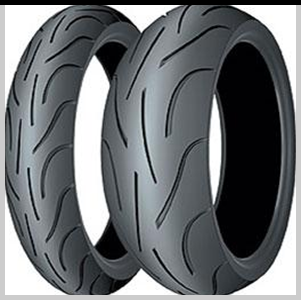 Tire Safety and Other Information
Tire Safety and Other Information
Gary Brandt
We have been informed in the past regarding available links that can provide us with safety and other important information.
There is one link that provides a significant amount of safety information for not only Motorcycles, but other vehicles as well? The Federal Governments NHTSA department maintains a complete website, for not only Motorcycles but autos and trucks as well.
Use the link: https://icsw.nhtsa.gov/people/injury/pedbimot/motorcycle/ to see dozens of items including reports and other facts.
The tire safety tip section is reprinted with permission below. In fact all of the information on the NHTSA site is considered public and can be copied and reused as you wish.
This is the link to see this specific report. If you go to the site you can follow the embedded links that lead to other information.
https://www.nhtsa.gov/people/injury/pedbimot/motorcycle/psimotorcycle/pages/McycleTireSafTips.htm
Worth repeating are a few basic principles:
The following information is from NHTSA
MOTORCYCLE TIRE SAFETY TIPS
Know Your Pressure Level and Load Limits
• Become familiar with your motorcycle manufacturer’s inflation guidelines. Look in your motorcycle owner’s manual to find the right PSI (pounds per square inch) of air pressure for your tires. Some bike manufacturers also list this formation on the bike itself. Common locations include the swing arm, front fork tubes, inside the trunk, and under the seat.
• Keep in mind that these recommendations are usually dependent upon the weight of you and your passenger, as well as any cargo. For instance, some manufacturers advise adding 3 or 4 PSI when carrying a heavy load. Know your vehicle weight and load, and follow the PSI recommendations specific to your motorcycle. Failure to do so can result in adverse motorcycle handling (wobble and weave) or tire failure, or both.
• Check your tire pressure often and adjust as necessary, using an accurate tire gauge. Motorcycle tire manufacturers recommend checking pressure at least once a week. However, many motorcycle safety experts recommend checking tire pressure and tread wear every time you take your bike out. After all, you ask more of your motorcycle tires than you do your car tires. So it’s wise to ensure they’re roadworthy each time you ride.
Tire Wear and Care, and When to Buy Replacements
• Take the time to frequently inspect your tires for sidewall and tread groove cracking, punctures, blisters, knots, and cuts, excessive or irregular wear. As with tire pressure, it only takes a few minutes every time you ride is not too often. If you do find any of these tread wear conditions, immediately replace the damaged tire. In addition, most tire safety experts recommend replacing rather than attempting to permanently patch a tire.
• When your tread is worn down to the level of the built-in tread wear bars on your tires, the tread won’t provide good traction. This is yet another indication it’s time for new tires.
• Check your tires for signs of aging, including dry rot and cracking. Even barely used tires become hard with time or exposure to the sun. When tire rubber gets hard and stiff, it tends to crack and cannot grip the road to provide proper traction. So it’s wise to replace old or dried-out tires even if they still have plenty of tread on them.
• If you store your motorcycle during winter months, be sure to store it in a cool, dry place, out of direct sunlight and away from ozone-producing appliances (anything with an electric motor, such as a refrigerator). Additionally, your tires should not come into sustained contact with gasoline or oil. Improper storage will rapidly accelerate the normal aging process, making your tires unsafe.
What to Consider Before You Tire-Shop
• Make sure you get a matching set of front and rear tires. Unlike car tires, you need to make sure that your motorcycle tires are a matched set. At a minimum, they should have complementary tread patterns, should both be either radial or bias ply, and ideally be the same make and model.
• Size matters. It’s best to choose replacement tires of the same size as the motorcycle’s original equipment tires.
• Remember that front and rear motorcycle tires are not designed to perform exactly the same functions and are not interchangeable. You’ll need one front tire and one back tire of a complementary make, model and size.
Tire Safety on the Road
• Avoid riding on the shoulder or near medians where sharp objects and other tire-damaging debris tend to accumulate.
• Constantly monitor the way your motorcycle rides so you can detect any rapid air loss — and respond appropriately without delay.
• Carry a cell phone whenever you ride, in case of emergencies.
How to Handle a Tire Blowout While Riding a Motorcycle
With today’s tubeless tires, actual blowouts are rare, but may still occur. When tires do fail, the most common cause is improper tire pressure usually pressure that’s too low. Checking the overall condition and pressure levels of your tires frequently can go a long way toward ensuring you’ll never experience a blowout. However, if one of your motorcycle’s tires should fail while you’re riding, you’ll need to react quickly and decisively to avert a crash. So take a few minutes now to familiarize yourself with the following steps for successfully handling motorcycle tire blowouts:
1. Ease off the throttle and slow down gradually.
2. Do not use the brakes. Braking, especially braking hard will only make keeping control of your motorcycle even more difficult. If you must use some brake, apply gradual force to the brake on the good tire and ease your motorcycle to a safe stop.
Caution: Using the brake on the wheel with the bad tire can cause the tire to separate from the rim, resulting in immediate loss of control. Be aware, however, that integrated braking systems don’t permit rear-brake-only applications, while linked braking systems do not allow for single-brake operation. On motorcycles with either of these two systems, braking with the good tire only may not be possible. Any braking necessary should be done very lightly and with great care. Avoid downshifting too. Like braking, this will only make your bike less stable.
3. Firmly hold on to the handlebars while keeping your arms bent. Do not “fight” the steering to correct the wobble or weave that will likely develop. Focus instead on maintaining control by keeping your motorcycle directed in as straight a line as possible until it comes to a stop.
4. Remain seated until your motorcycle has come to a full stop.
5. Once stopped, push your motorcycle as far away from the travel lanes as possible.
While tire blowouts are not common, the absolute best way to “handle one” is to avert it before it happens.





